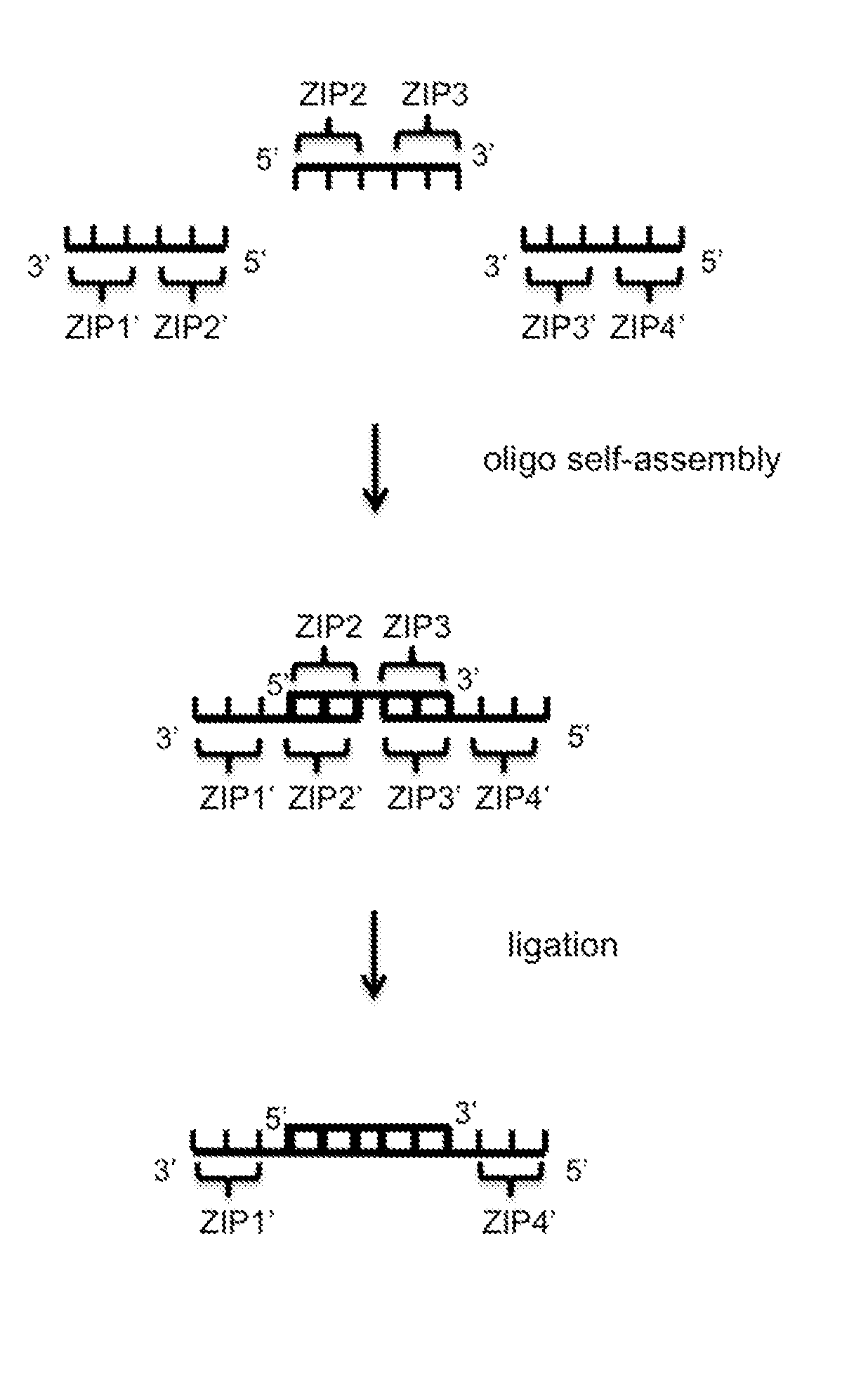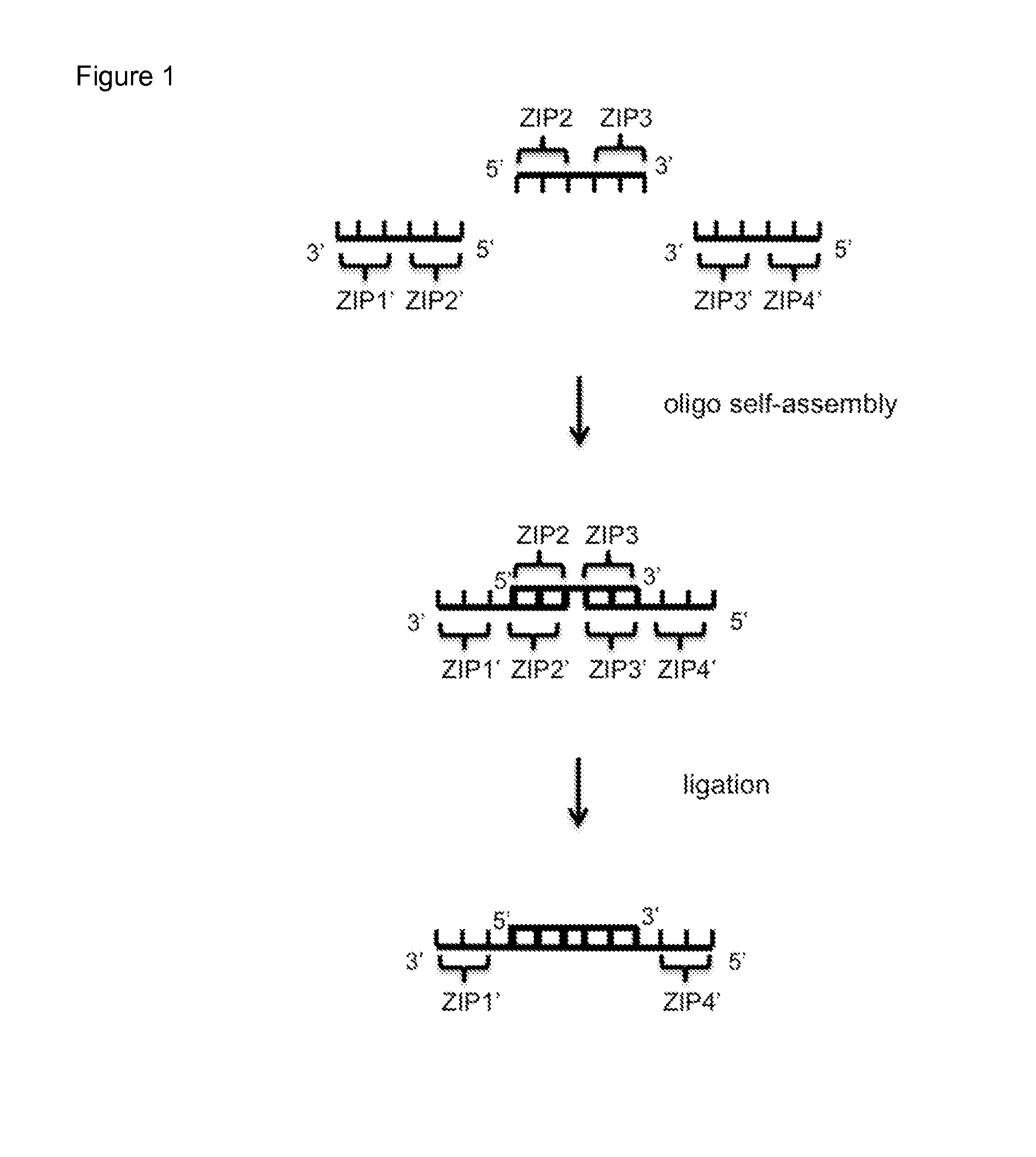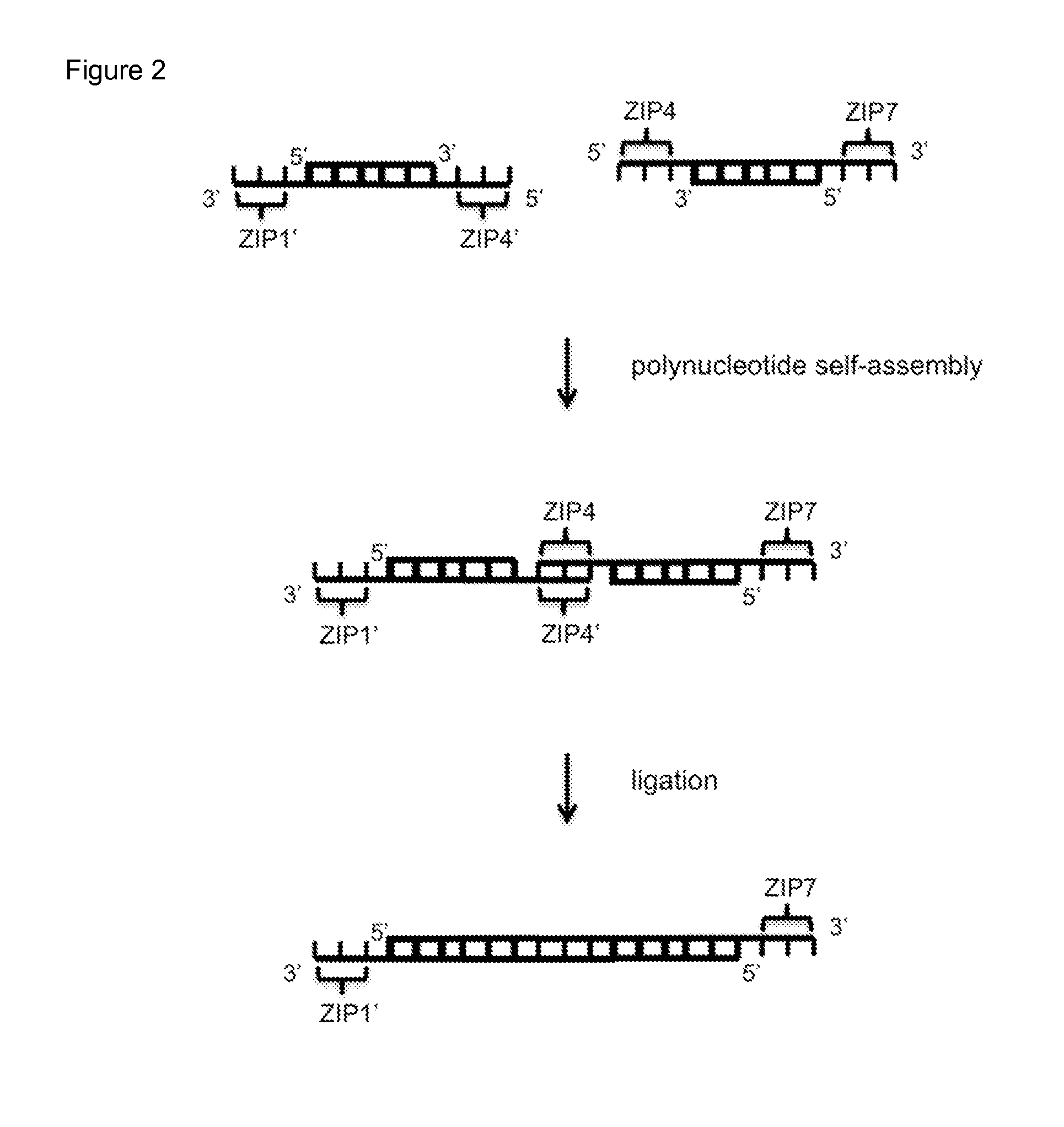Gene synthesis by self-assembly of small oligonucleotide building blocks
a technology of oligonucleotide building blocks and gene synthesis, which is applied in the field of synthesizing biology, can solve the problems of limited oligo library size and supports the development of automated processes, and achieve the effects of increasing the accuracy of synthesizing, reducing costs, and increasing the productivity of biological systems
- Summary
- Abstract
- Description
- Claims
- Application Information
AI Technical Summary
Benefits of technology
Problems solved by technology
Method used
Image
Examples
Embodiment Construction
[0048]The following descriptions relate to preferred embodiments of the invention and involve assembling large, even gene-length, double stranded polynucleotides using single stranded oligonucleotides of preferably six bases (i.e. hexamers) together with partly double stranded polynucleotide molecules having three base overhangs; however, the preferred embodiments of the invention are not limited to any one length of overhang and single stranded oligonucleotides having lengths up to more than 20 bases and overhangs up to more than 10 bases can be applied.
[0049]In one preferred embodiment of the invention, the oligonucleotides are all six bases long and the overhangs are three nucleotides long. The oligonucleotides are used to connect the double stranded polynucleotides to one another and to the seed through complimentary sets of nucleotide bases; here referred to as molecular zip codes. Each 3-nucleotide sequence provides one of 64 (43) possible molecular zip codes; whereas the use ...
PUM
| Property | Measurement | Unit |
|---|---|---|
| molecular weight | aaaaa | aaaaa |
| structure | aaaaa | aaaaa |
| length | aaaaa | aaaaa |
Abstract
Description
Claims
Application Information
 Login to View More
Login to View More - R&D
- Intellectual Property
- Life Sciences
- Materials
- Tech Scout
- Unparalleled Data Quality
- Higher Quality Content
- 60% Fewer Hallucinations
Browse by: Latest US Patents, China's latest patents, Technical Efficacy Thesaurus, Application Domain, Technology Topic, Popular Technical Reports.
© 2025 PatSnap. All rights reserved.Legal|Privacy policy|Modern Slavery Act Transparency Statement|Sitemap|About US| Contact US: help@patsnap.com



